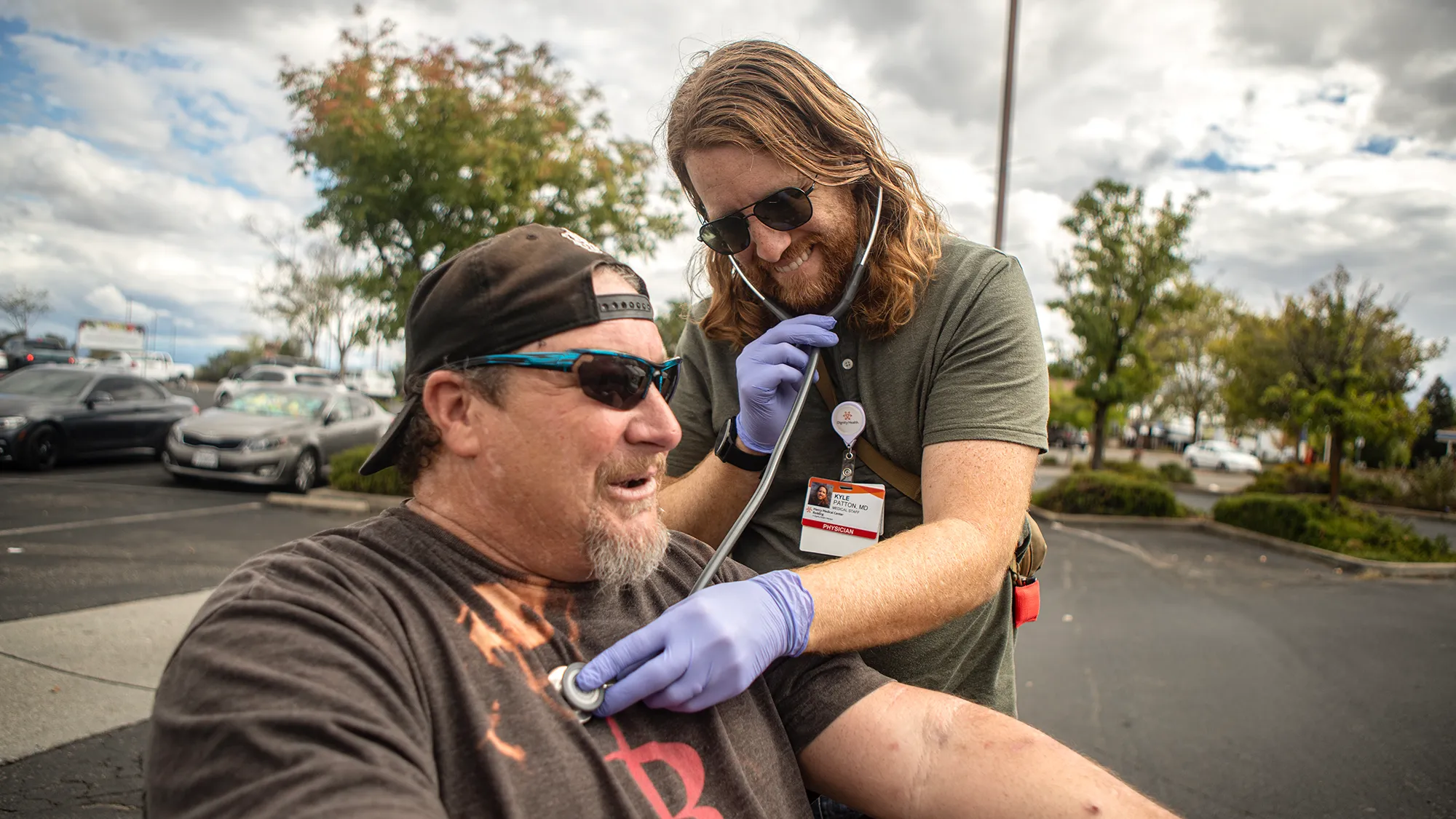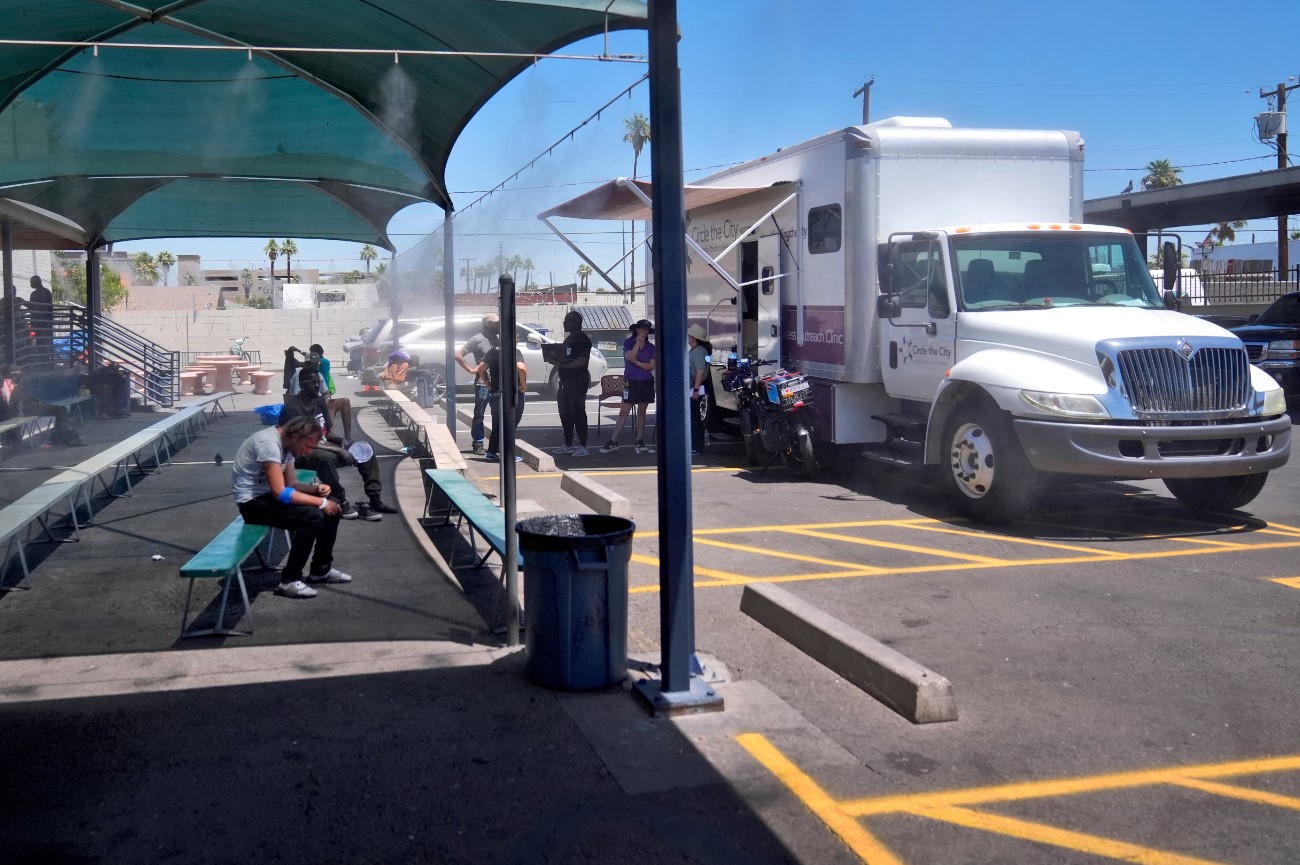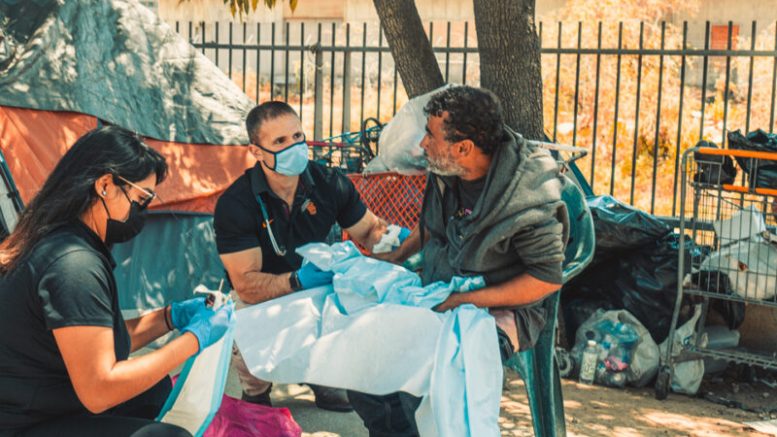As temperatures in metro Phoenix reach triple digits, people forced to live outdoors in the hot desert sun are becoming especially vulnerable to heat illness.
Innovative Heat Protection: Circle the City IV Hydration Program for Phoenix’s Homeless
Circle the City introduced an intravenous rehydration program as a means to protect homeless people from dangerous heat-related illnesses. In America’s hottest metropolis, where temperatures frequently hit triple digits, nearly half of last year’s record 645 heat-related deaths in Maricopa County, which includes metro Phoenix, were among homeless individuals. Dr. Liz Fry, vice chair of the Institute of Street Medicine, which trains hundreds of medical teams around the world, noted that Circle the City is the only group she knows of that provides intravenous injections on the street.
“But if it saves someone from dying, I fully support such measures,” Fry said.
As temperatures rise during summer, healthcare professionals from San Diego to New York are facing challenges with improving protections for homeless individuals. Dr. Dave Munson, medical director of the street team, noted that even the Boston Medical Care for the Homeless program, known from last year’s book “Homeless at Night,” now includes serving patients with mild cases of heat exhaustion in the summer. This innovation follows decades of work in the program to help people suffering from frostbite and hypothermia during the winter season.
“Obviously there is cause for concern,” Munson said, pointing out that in June the temperature in Boston reached100 degrees Fahrenheit with 70% relative humidity. Homeless people, he said, are especially vulnerable to extremely hot and cold temperatures, not only because of their life on the street, but also because of difficulties in regulating their body temperature associated with the use of medications to treat mental health conditions and hypertension or drug use. street drugs.

The Phoenix team actively seeks patients from the homeless population living in encampments in dry riverbeds, choking alleys and along canals that supply water to the Phoenix area. Approximately 15% of them require intravenous saline.
“We go out and find them every day,” said nurse Perla Puebla. “We take care of their wounds, provide diabetes medications, antibiotics and medications for hypertension. The Puebla team came across Phillip Enriquez, a 36-year-old resident of Phoenix,and Handley near an overpass in a location often visited by homeless individuals seeking free meals.
Across from them, there was a makeshift camp with tents and awnings forming a barrier along the chain-link fence. Enriquez was seated on the ground as Puebla administered an intravenous treatment. Additionally, she provided him with a prescription for antibiotics and directed him to a dentist for treatment of a tooth infection.Life on the streets in Arizona’s heat is especially difficult for people who suffer from mental illness or use powerful sedatives such as fentanyl, which make them less sensitive to the environment. Stimulants like methamphetamine can cause dehydration, which can be fatal. This year, temperatures in metro Phoenix soared to 115 degrees Fahrenheit (45 degrees Celsius), leading to six confirmed heat-related deaths by June 22, with another 111 individuals under observation. “The number of heat-related illnesses among patients rises each year,” noted Dr. Anish Narang, assistant medical director of emergency medicine at Banner-Phoenix Medical Center, a facility that attends to numerous homeless individuals affected by heat stroke.
Heat Crisis: Circle the City’s Work in New Mexico to Protect Homeless People from Extreme Temperatures
Lindsey Fox, a physician assistant providing care for homeless individuals in Albuquerque, New Mexico, as part of a University of New Mexico School of Medicine initiative,highlighted the imperative for decisive measures against extreme heat globally. Three times a week, Fox treats infections, cares for wounds, and manages chronic conditions in collaboration with hospital colleagues. She expressed concern about a possible increase in cases of heat illness. Fox noted that in Albuquerque, maximum temperatures can reach the 90s and not drop quickly enough for homeless people to cool off overnight.
“If you’re in an urban area where there’s a lot of concrete, heat gets trapped,” she noted. “ We observe how quickly heat exposure can escalate to heat stroke.»

Severe heat stroke is prevalent in metropolitan Phoenix, Circle the City stands alongside many healthcare initiatives for the homeless, spanning cities such as New York, San Diego, and Spokane, Washington. Founded in 2012 by Dr. Adele O’Sullivan, a member of the Sisters of St. Joseph of Carondelet, Circle the City employs 260 team members, including 15 physicians, 13 physician assistants, and 11 nurse practitioners. About 9,000 patients are served here every year. Approximately 20% of funding comes from grants, donations and other gifts. The remainder is funded by payments from insurance plans like Medicaid and Medicare for the services they offer.
Circle the City collaborates with medical teams at seven hospitals in Phoenix to offer ongoing care to homeless individuals after they are discharged from the hospital.The organization also provides staff for two outpatient follow-up clinics.
“This collaboration enables us to achieve improved results for our patients,” Craig Orsini, the social work manager at St. Joseph’s Hospital and Medical Center in Phoenix, remarked on the situation.
This is often respite care for a few weeks or a stay in a hospital bed in the city center for wound dressing changes and other medical procedures. Patients requiring long-term recovery may be referred to facilities providing long-term care. During recovery, Circle the City also helps find long-term housing or transitional shelter for patients, including people over 55. Nearly 77% of short-term institutionalized patients move to more stable living conditions.
“We strive to find the best solution for each person,” emphasizes Wendy Adams, director of community engagement at Circle the City.
During the summer, Circle the City’s medical staff actively distributes tens of thousands of bottles of water and educates people about the dangers of high temperatures, said Dr. Matt Essary, who works at one of the organization’s five mobile clinics that provide care at soup kitchens and other homeless services.
Essary also noted the potential use of blood testing tools to identify electrolyte imbalances resulting from dehydration. “We can immediately see how severely dehydrated they are, as it becomes difficult to collect their blood,” he added. Symptoms can manifest as headaches, excessive thirst, dizziness, and dry mouth.
«We encounter many individuals as well with burns from hot surfaces,” Essary noted, describing common injuries in the hot Phoenix climate, where people can get burns from falling on hot sidewalks in emergency situations or from poisoning.
All this requires a comprehensive approach to helping homeless people in extreme heat. Circle the City continues to strive to not only provide local health care, but also seek long-term solutions to improve the lives of its patients. They actively collaborate with healthcare and social services. to ensure that homeless people have access to the health care, care, and stable housing conditions that support their recovery and well-being.

